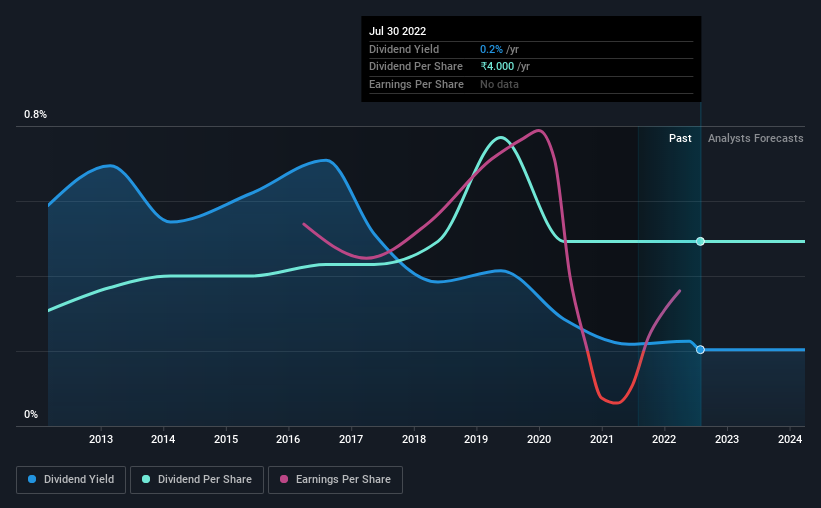[ad_1]
Bata India Limited (NSE:BATAINDIA) is about to trade ex-dividend in the next 3 days. The ex-dividend date is one business day before a company’s record date, which is the date on which the company determines which shareholders are entitled to receive a dividend. The ex-dividend date is an important date to be aware of as any purchase of the stock made on or after this date might mean a late settlement that doesn’t show on the record date. In other words, investors can purchase Bata India’s shares before the 4th of August in order to be eligible for the dividend, which will be paid on the 11th of September.
The upcoming dividend for Bata India will put a total of ₹54.50 per share in shareholders’ pockets, up from last year’s total dividends of ₹4.00. Dividends are a major contributor to investment returns for long term holders, but only if the dividend continues to be paid. As a result, readers should always check whether Bata India has been able to grow its dividends, or if the dividend might be cut.
See our latest analysis for Bata India
Dividends are typically paid from company earnings. If a company pays more in dividends than it earned in profit, then the dividend could be unsustainable. That’s why it’s good to see Bata India paying out a modest 50% of its earnings. A useful secondary check can be to evaluate whether Bata India generated enough free cash flow to afford its dividend. Thankfully its dividend payments took up just 32% of the free cash flow it generated, which is a comfortable payout ratio.
It’s positive to see that Bata India’s dividend is covered by both profits and cash flow, since this is generally a sign that the dividend is sustainable, and a lower payout ratio usually suggests a greater margin of safety before the dividend gets cut.
Click here to see the company’s payout ratio, plus analyst estimates of its future dividends.

Have Earnings And Dividends Been Growing?
Businesses with shrinking earnings are tricky from a dividend perspective. If earnings decline and the company is forced to cut its dividend, investors could watch the value of their investment go up in smoke. Readers will understand then, why we’re concerned to see Bata India’s earnings per share have dropped 8.3% a year over the past five years. Such a sharp decline casts doubt on the future sustainability of the dividend.
Many investors will assess a company’s dividend performance by evaluating how much the dividend payments have changed over time. Bata India has delivered an average of 4.8% per year annual increase in its dividend, based on the past 10 years of dividend payments.
Final Takeaway
Should investors buy Bata India for the upcoming dividend? Earnings per share are down meaningfully, although at least the company is paying out a low and conservative percentage of both its earnings and cash flow. It’s definitely not great to see earnings falling, but at least there may be some buffer before the dividend needs to be cut. While it does have some good things going for it, we’re a bit ambivalent and it would take more to convince us of Bata India’s dividend merits.
Wondering what the future holds for Bata India? See what the two analysts we track are forecasting, with this visualisation of its historical and future estimated earnings and cash flow
Generally, we wouldn’t recommend just buying the first dividend stock you see. Here’s a curated list of interesting stocks that are strong dividend payers.
Have feedback on this article? Concerned about the content? Get in touch with us directly. Alternatively, email editorial-team (at) simplywallst.com.
This article by Simply Wall St is general in nature. We provide commentary based on historical data and analyst forecasts only using an unbiased methodology and our articles are not intended to be financial advice. It does not constitute a recommendation to buy or sell any stock, and does not take account of your objectives, or your financial situation. We aim to bring you long-term focused analysis driven by fundamental data. Note that our analysis may not factor in the latest price-sensitive company announcements or qualitative material. Simply Wall St has no position in any stocks mentioned.
[ad_2]
Source link








